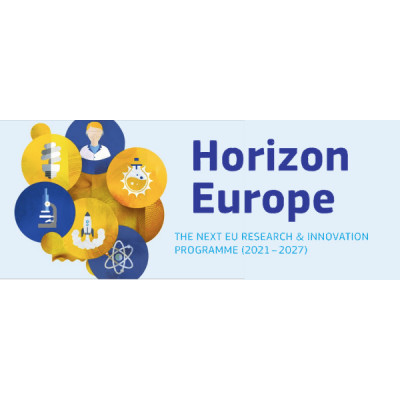Share
Print

Call updates:
Apr 19, 2024 10:55:55 PM
PROPOSAL NUMBERS
Call HORIZON-JU-SNS-2024 has closed on the 18 April 2024 at 17.00.00
109 proposals have been submitted.
The breakdown per topic is:
HORIZON-JU-SNS-2024-STREAM-B-01-01: 26 proposals
Evaluation results are expected to be communicated in July 2024
05 April 2024
Please note that the deadline to apply for 6G-IA membership is the 31st of March 2024. After that time it cannot be guaranteed that membership applications will be processed in time
Dec 8, 2023 7:28:13 PM
Please note that the funding rates in this topic are: 100% for non-for-profit organizations and 90% with respect to for-profit organizations. Unfortunately, the maximum funding rate in the budget table is set to 100%. We kindly ask all for-profit organizations to make a manual calculation and request only 90% of the budget.
System Architecture - Standardisation and Follow-up/PoCs
HORIZON-JU-SNS-2024-STREAM-B-01-01
Programme: Horizon Europe Framework Programme (HORIZON)
Call: HORIZON-JU-SNS-2024 (HORIZON-JU-SNS-2024)
Type of action: HORIZON-JU-RIA HORIZON JU Research and Innovation Actions
Type of MGA: HORIZON Action Grant Budget-Based [HORIZON-AG]
Deadline model: single-stage
Planned opening date: 16 January 2024
Deadline date: 18 April 2024 17:00:00 Brussels time
ExpectedOutcome:
The target outcomes address consolidation of results in the field of:
Architectures providing built-in capabilities/mechanisms that enable the seamless integration of multiple system segments (e.g., public and private, terrestrial and satellite, inter-operation among operators, computing and networking) and allow the establishment of innovative business models, including the migration and deployment models. Increased global resilience (at a technical and economical level) is expected to be a key outcome of these architecture innovations.
Innovative solutions for native and trustworthy AI for telecommunication to support end-to-end operational processes.
Mechanisms (e.g., Digital twinning frameworks) to be used for the improved management and operation of 6G networks.
New communication mechanisms and methods that new system level communication concepts and associated protocols and methods that will enable optimized communications such as shared situational awareness and dynamic capabilities among all stakeholders (verticals, service providers and network operators) through appropriate interfaces including APIs.
Enhanced data plane frameworks that guarantee economically and technically sustainable architectures with cross-flow resource management capabilities.
Algorithms, software and hardware implementations paired with organisational processes where appropriate, which can be used for PoC and later trials systems.
Dissemination of solutions for international consensus building, which can be exploited in standardisation activities.
Contributions to international standardisation, considering also topics related to backward compatibility and further evolution of the 6G architecture.
Objective:
Please refer to the "Specific Challenges and Objectives" section for Stream B in the Work Programme, available under ‘Topic Conditions and Documents - Additional Documents’.
Scope:
The focus of this Strand is on several complementary issues mentioned below and applicants may select one or more of these issues.
New design approaches for 6G system architecture systems in all aspects of control, data and management plane including further advances that emerge out of the collaboration of individual networks or subsystems owned by different stakeholders, at computing and networking levels. These subsystems may potentially include Non-Public Networks (NPN) - including short/extreme connectivity - and/or NTN segments. This may require rethinking key service and network interfaces, structure and enablers covering simplification, sustainability, energy-efficiency, resource or asset sharing, resource configuration orchestration and allocation, robustness, and security, federation and mobility across networks. For the new advanced 6G services, it is desirable to enhance networks with the capability to guarantee a certain performance (i.e., latency, reliability, throughput) across different operation conditions (e.g., using overlay time synchronisation). Negotiation, accounting and billing across multiple systems, as well proper authentication, authorisation are also in scope. The work covers the migration/deployment strategies that may be most appropriate in EU deployment scenarios.
Native and trustworthy integration of AI for telecommunications, including edge cloud continuum. Native integration of AI/ML is in scope to implement end-to-end adaptive decision-making ensuring conflict resolution and a high degree of trustworthiness while addressing privacy and explainability issues, operating at different time scales with expected impact on energy and network as well as other services’ performance.
Network exposure to vertical application developers including protocols, algorithms, architectures and solutions for user-to-systems interface. Allowing exposition of available resources and required/value-added service attributes (performance, security, sustainability) related to the user applications and getting semantic of the requirements from user applications explicitly or implicitly. Specific approaches for relevant vertical ecosystems are in scope.
Mechanisms, leading to partial or complete Digital network twinning, applied in 6G including the dynamic virtual representation of critical components and systems, the simulation and modelling tools for large-scale real-time environments; derivation of network models (digital twins) from traffic analysis; These models should be created in a trustworthy (secure) and privacy preserving way. Digital twin models as a core for network planning, management and control are also in scope.
New Data Transfer Paradigms, considering enhanced data plane (including IP framework evolution) techniques with deep Edge integration. In scope are considered Compute-Interconnection (CIC) architectural frameworks expected to enable data plane evolution that is economically and technically sustainable. Cross-flow and cross-endpoint data plane mechanisms and protocols for cross-flow resource and timing (latency) control.
The scope includes, where relevant, harmonisation/coordination with Member States or Associated Countries 6G initiatives. Any produced PoCs should be implemented in a way that their integration in SNS WP2025-26 Stream C and/or Stream D project will be possible (e.g., open-source solutions, appropriate documentation, support after the completion of the project).

This section allows you to leave comments. Only your team can view them.
Post a comment